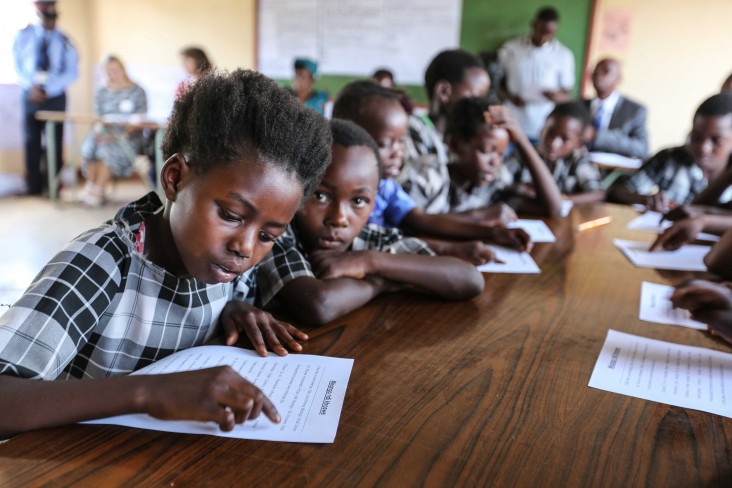Speeches Shim

Zambia has made significant gains in increasing access to education, but the education system continues to be plagued by inadequate resources, poor education quality and low progression rates. In collaboration with the Zambian government and other implementing and cooperating partners, USAID education programs aim to increase learners’ performance in the early grades, and target foundational literacy skills.
USAID programs also strengthen the capacity of teachers and school administrators to better deliver education services, and provide improved teaching and learning materials. A well-educated population in both the private sector (to stimulate economic growth) and the public sector (to provide effective services) is essential to reduce poverty and eliminate the need for donor assistance.
Strengthening Children’s Ability To Read
By partnering with Zambia’s Ministry of General Education (MOGE), USAID aims to improve the quality of reading instruction and learning materials, strengthen supportive teaching, supervision and monitoring, and harness the engagement of communities to improve children’s ability to read.
Through the flagship Let’s Read project, USAID, in partnership with the MOGE, aims to improve reading outcomes for 1.4 million children in pre-primary through Grade 3, reaching over half of Zambia’s public primary and community schools.
Through partnerships with the private sector, USAID further engages with key leaders and community actors, including local chiefs and traditional leaders, to leverage educational resources and strengthen the quality of reading instruction and support.
USAID has a strong history of collaboration with the MOGE to implement Zambia’s primary literacy curriculum, strengthen systems to deliver quality primary literacy instruction, improve performance of both community and public schools, expand equitable opportunities for boys and girls, and strengthen school-level assessments.
In particular, USAID has supported the MOGE to develop, print, and distribute teachers’ guides and literacy textbooks in English and seven local languages to schools across the country. Specially designed teaching and learning materials for children with special needs were also developed and distributed throughout Zambia.
Expanding Learning Opportunities
Primary school enrollment in Africa has grown at an unprecedented rate over the last two decades, flooding schools with first-generation learners, and creating classrooms with deeply heterogeneous learning levels. Compounding this, ministries often pressure teachers to complete dense curricula and prepare students for high-stake exams, leading teachers to teach to the top of the class. Zambia is no exception to this challenge.
In collaboration with the Abdul Latif Jameel Poverty Action Lab (J-PAL), USAID/Zambia is supporting the MoGE in the implementation of the Teaching at the Right Level (TaRL) approach in target schools across the nation. The TaRL model involves assessing students’ literacy and numeracy levels and grouping them according to proficiency level as opposed to grade level. Students then follow a learner-centered program that targets their current learning levels and helps them recover foundational skills to “catch up” to grade level.
Measuring Academic Achievement
Efforts to measure progress towards improved early-grade reading are informed by U.S. Government Strategy on Basic Education and the United States Congress Reinforcing Education Accountability in Development (READ) Act of 2017. To this effect, USAID’s Education Data activity provides distinct assessment, research, and evaluation services to track progress of USAID’s reading intervention in Zambia.


Comment
Make a general inquiry or suggest an improvement.